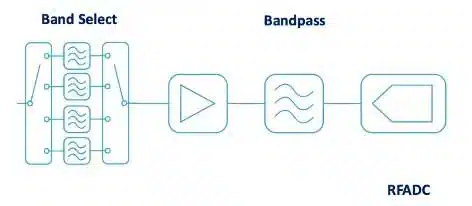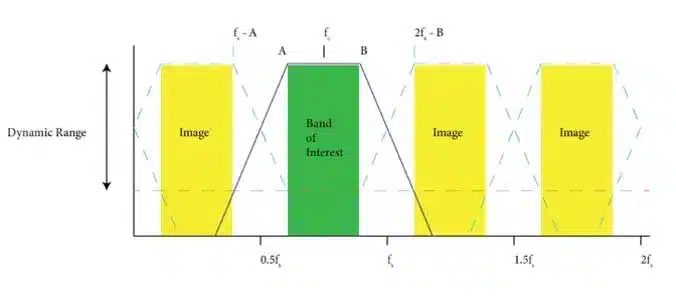This article based on Knowles Precision Devices blog explains the role of filters in expanding bandwidth for electronic warfare receivers.
Electronic warfare (EW) systems are an increasingly critical component of modern warfare. They seek to control and exploit the electromagnetic spectrum to gain an advantage over adversaries while preventing them from reciprocating.
This includes detecting and denying the use of filters in radar systems and GPS. There are three main sectors within electronic warfare. Electronic attack (EA) focuses on acts designed to disrupt, degrade, destroy or deceive. Electronic protection (EP) seeks to diminish the effectiveness of adversarial EA systems. Electronic support (ES) extracts signal information for intelligence purposes.
From a design perspective, addressing the complexity of EW missions presents broad technical challenges. To meet strict size, weight and power requirements, engineers are miniaturizing and integrating functions like signal acquisition, processing and generation into complex components. In tandem, there are efforts to develop broader bandwidth sensors and rapid sensor switching capabilities to process and analyze a wider range of frequencies and adapt in real time.
To achieve this expanded level of functionality, it’s advantageous to digitize signals earlier in the receive chain to allow the system to adapt. In software-defined radio (SDR), signal processing relies on software rather than hardware, adding the versatility needed for real-time function. While SDR isn’t new, engineers are applying it to a wider range of frequencies as RF analog-to-digital converters (RF-ADCs) advance.
Since RF-ADCs are capable of sampling at higher rates, EW receiver tuners can select larger portions of the spectrum. While this is a major advancement, there are tradeoffs to consider. As SDRs operate across more frequencies and in digital, they become more susceptible to intentional and unintentional interference (i.e., jamming).
This shift also indicates that, while there may less of a need for analog components, RF filters are still advantageous in some cases. The fundamental role of a filter is changing with technology choice and availability, and the industry needs a range of frequency bands in filters to best support these cases. As we shift from IF conversion to RF conversion, filters can focus on other essential functions like band select and anti-alias to maximize the filter bandwidth and out of band rejection.
For example, a modern tuner, shown in Figure 1, can take advantage of an RF-ADC to sample RF directly, resulting in a simpler receiver design. A band select function, like a switched filter bank, selects the relevant region of spectrum followed by a single bandpass filter, which can perform anti-aliasing for the ADC.
An anti-alias bandpass filter is required when a digital receiver makes use of under-sampling. This is a technique where an ADC is used capture information contained in frequency bands that are at center frequencies higher than the Nyquist rate (i.e. half of the sampling rate of the ADC). This is possible up to the analog bandwidth of the ADC. For example, in Figure 2 our band of interest (shown in green) is above 0.5fs and sits in the second Nyquist zone. There will be images (show in yellow) located in the Nyquist zones above and below.
A bandpass filter is chosen to select the band of interest. Where the filter slope meets the red dashed line in Figure 2, noise from the images above and below will be aliased into the passband, allowing noise into the receiver, and setting a limit on the dynamic range.
A higher rejection filter would have a steeper slope, meeting the adjacent images further down the y-axis and increasing the dynamic range. Conversely, a steeper slope on a wider band filter would allow us to widen the green band of interest. The yellow images will widen also, but the increased performance filter allows us to fit within the narrowed transition band, keeping the same dynamic range as before.
Bandpass filter selection in this kind of application aims to make maximum use of the available bandwidth (up to 0.5fs) while keeping a high dynamic range. Wideband, high rejection filters are ideal in this situation, and having very wideband filters that can match the very high sampling rates of modern RFADCs is an enabler in digital receiver design.
For more information, read Combining Filter Technologies to Create Higher-Vale Compact Filters to learn how we’re supporting the evolving needs of RF system architecture in electronic warfare systems with wideband filters.

































